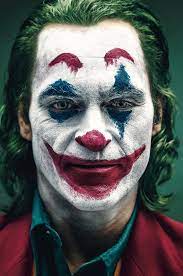Introduction
The Joker, one of the most iconic villains in comic book history, has been a central figure in the Batman universe since his debut in 1940. Created by Bill Finger, Bob Kane, and Jerry Robinson, The Joker has evolved from a cartoonish criminal into a complex character symbolizing chaos and anarchy. His enigmatic nature and unpredictable behavior make him Batman’s perfect arch-nemesis, embodying the antithesis of the Dark Knight’s order and justice.
Origins and Evolution
Initially, The Joker was a straightforward homicidal maniac with a penchant for elaborate criminal plots. Over the years, his character has undergone significant transformations, reflecting broader changes in comics and society. From a murderous trickster in the early days to a prankster in the 1950s and 60s, The Joker returned to his darker roots in the 1970s. This change was further solidified in modern portrayals, where he is depicted as a psychopathic, nihilistic agent of chaos.
Character Description
The Joker is known for his clown-like appearance, with his white skin, green hair, and a wide, red grin. His attire usually involves a purple suit, embodying the traditional image of a jester or clown. However, it’s not his appearance but his personality that truly defines him. The Joker’s psyche is a complex and often contradictory mix of intelligence, sadistic humor, and utter madness. He lacks empathy and is driven by a desire to create chaos, often devising schemes that put both Gotham and its Dark Knight to the test.
Portrayals in Film and Television
The Joker has been brought to life by various actors, each offering a unique interpretation of the character. Cesar Romero portrayed him as a playful trickster in the 1960s “Batman” TV series. Jack Nicholson’s portrayal in Tim Burton’s “Batman” (1989) presented a mobster-like Joker with a dark sense of humor. Heath Ledger’s Academy Award-winning performance in “The Dark Knight” (2008) introduced a more gritty, anarchistic Joker. Jared Leto’s version in “Suicide Squad” (2016) offered a modern, gangster-like take, while Joaquin Phoenix in “Joker” (2019) presented a deeply psychological and realistic portrayal, earning him an Oscar.
The Joker’s Role and Symbolism
The Joker’s significance extends beyond a mere comic book villain. He represents the unpredictable and often incomprehensible nature of evil. In the Batman universe, he serves as a foil to Batman’s order and reason, challenging both the hero and the audience’s perceptions of morality and sanity. His unpredictable nature and lack of a definitive origin story make him a symbol of chaos and the irrational aspects of human nature.
Cultural Impact
The Joker has left an indelible mark on popular culture. He’s not just a comic book character but a cultural icon, symbolizing the allure and horror of madness. His influence can be seen in various media, from TV shows to films, and his character continues to be a subject of analysis in the realms of psychology and philosophy.
Conclusion
The Joker stands as one of the greatest villains in literature and popular culture, captivating audiences with his blend of humor, horror, and chaos. More than just a nemesis to Batman, he challenges our understanding of what it means to be a villain and the nature of evil itself. In the ever-evolving narrative of the Batman universe, The Joker endures as a character both timeless and endlessly adaptable, a testament to the enduring power and complexity of storytelling.

 Heath Ledger as Joker
Heath Ledger as Joker  Jack Nicholson as Joker
Jack Nicholson as Joker  Joaquin Phoenix as Joker
Joaquin Phoenix as Joker